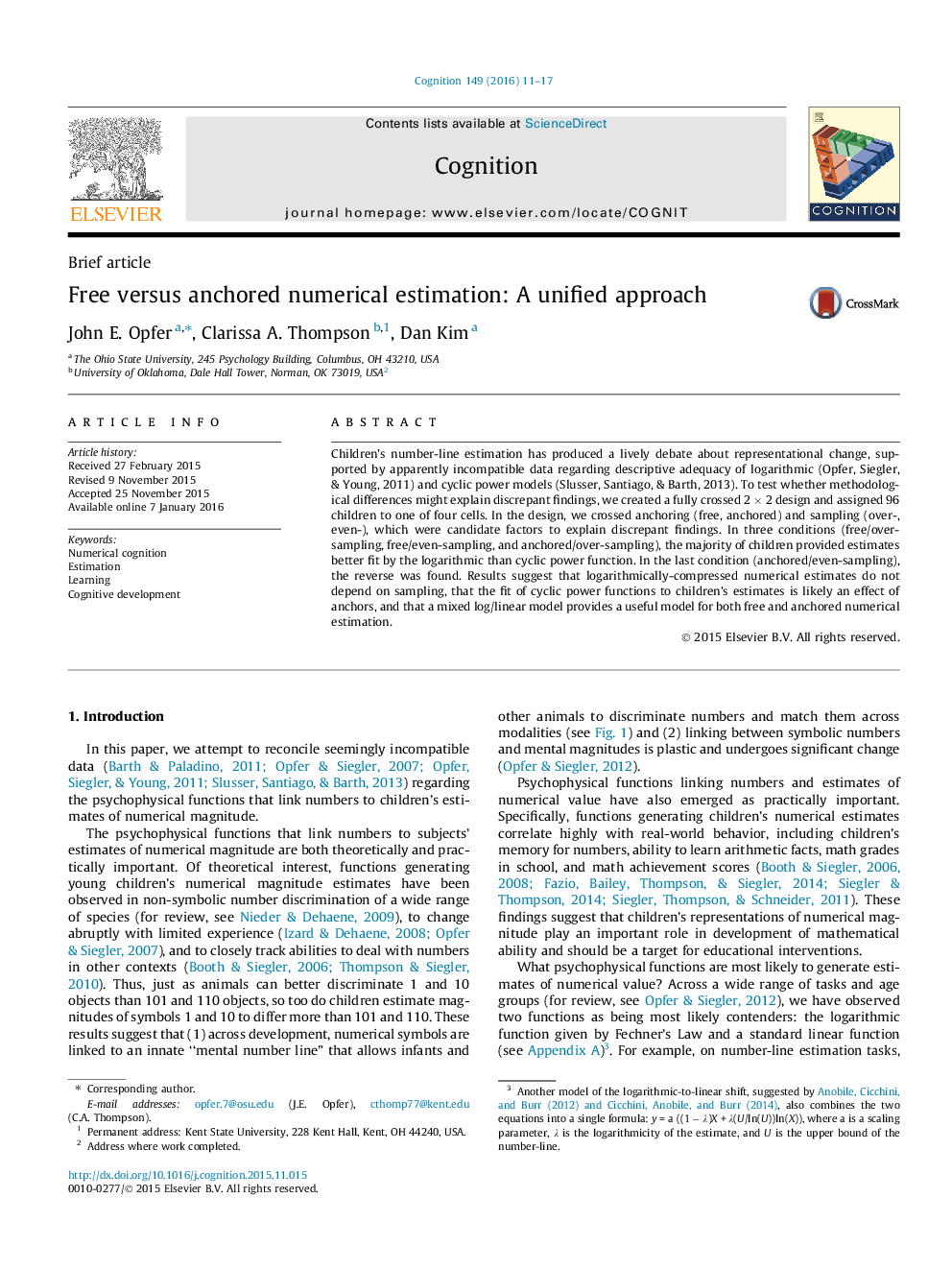| کد مقاله | کد نشریه | سال انتشار | مقاله انگلیسی | نسخه تمام متن |
|---|---|---|---|---|
| 926446 | 1474118 | 2016 | 7 صفحه PDF | دانلود رایگان |
• Rival estimation theories rest on data yielded by different methods.
• Effects of anchors and sampling were tested in 2 × 2 design.
• Free and anchored estimates were best predicted by a mixed log-linear model.
• Logarithmicity of estimates declined as a function of age and anchors.
Children’s number-line estimation has produced a lively debate about representational change, supported by apparently incompatible data regarding descriptive adequacy of logarithmic (Opfer, Siegler, & Young, 2011) and cyclic power models (Slusser, Santiago, & Barth, 2013). To test whether methodological differences might explain discrepant findings, we created a fully crossed 2 × 2 design and assigned 96 children to one of four cells. In the design, we crossed anchoring (free, anchored) and sampling (over-, even-), which were candidate factors to explain discrepant findings. In three conditions (free/over-sampling, free/even-sampling, and anchored/over-sampling), the majority of children provided estimates better fit by the logarithmic than cyclic power function. In the last condition (anchored/even-sampling), the reverse was found. Results suggest that logarithmically-compressed numerical estimates do not depend on sampling, that the fit of cyclic power functions to children’s estimates is likely an effect of anchors, and that a mixed log/linear model provides a useful model for both free and anchored numerical estimation.
Journal: Cognition - Volume 149, April 2016, Pages 11–17
